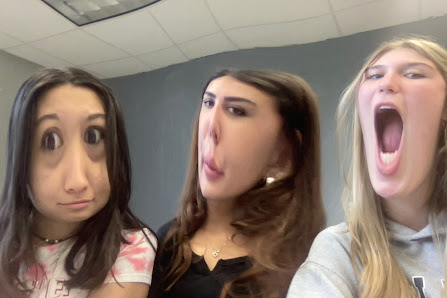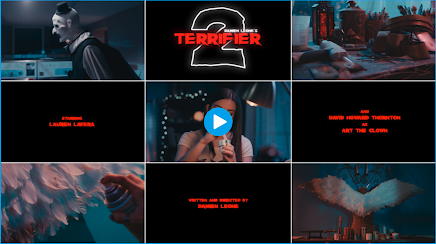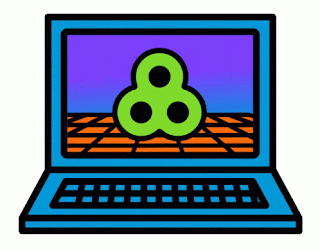CCR
1. How does your product use or challenge conventions AND how does it represent social groups or issues?
The product includes LGBTQ+ representation by demonstrating the love story between two closeted lesbians. This is exercising social awareness of two closeted lesbians and is normalizing the love between two girls. General love stories usually show a straight girl and a straight boy in a love conflict. In Taylor Swift's original music video, the love conflict was between a boy and a girl developing a love for each other. This is a repetitive pattern in most of her music videos and most love artists do the same. My product challenges other types of love which are not as traditional and for a long time were frowned upon. Social issues like homophobia are also a factor of everyday struggles LGBTQ+ communities face. My music video represents how homophobia and negative stigma on the whole LGBTQ+ community is a real thing and can affect how people act and feel towards their own identification. Even though being lesbian and not straight has become more accepted, teenagers still feel pressure and loneliness in society and even in their friendships and families. My product can effectively bring a positive light to this real type of love by showing a situation in which two girls love each other but are scared.
2. How does your product engage with audiences AND how would it be distributed as a real media text?
LGBTQ+ audiences and general audiences can closely relate to our product due to its message being that you don’t have to hide who you are and you don’t have to follow a crowd. It closely connects with the LGBTQ+ community as many teenage girls are trying to figure out who they are and what genders they are attracted to. Not just girls but everyone can probably relate to feeling lost and overwhelmed about careers, personal identification, attraction, relationships, and more. There are many ways my message can be interpreted. Many audiences can relate to the theme that the product conveys and can give a feeling of community and intimacy with their selves and their identification. The act of feeling and seeing something you can relate to gives a sense of comfort that can draw you to further interact with that something and perhaps go back to it or imitate it in some way. This is seen to happen when representing, in my case, a teenage closeted lesbian because there could be a million other girls who feel like this. Social media is a huge distributor of everything LGBTQ+. From apps like TikTok and Instagram to simple hashtags and comments, social media is the place to see the LGBTQ+ community being represented both positively and negatively. For example, many creators that are a part of the community share their experiences and how they found themselves but there is also a lot of hate and political talk about the community. There are stereotypes and roles that social media creates for LGBTQ+ members which can bring divisions and further separate people from their true selves.
3. How did your production skills develop throughout this project?
I think my production skills have significantly developed during this project. To start, I think I did and always have contributed heavily to anything relating to this project just based on my personal work ethic and patterns. When beginning to plan for a project I am very excited and start dropping and throwing out too many ideas to the point where I just wanna do them all. This happened in the commercial which caused the ideas to be incoherent and disorganized. As a result, during the music video planning, I decided to think about the big picture and what would be the most effective idea that could be executed properly. Individually, I kept my thoughts organized and thought out a whole idea first, before sharing. This definitely stopped the music video from having too many conflicting ideas and themes making the overall quality of the video more professional. I would say my critical thinking positively developed throughout the process. Another aspect that bettered was teamwork. During the process, everyone had a role and plan to stick to. In the end, everyone did their part. This was successful due to planning and communicating all the details of the music video like the props, the days of filming, the separation of work etc. It's a lot but I was able to execute my role and play my part, while still having a blast.
4. How did you integrate technologies software, hardware, and online in this project?
My music video would have not been anywhere near successful without technology. Firstly, filming was used off an iPhone 14 pro in cinematic mode in order to get the "camera-like" quality. That is something that is very important because having bad quality like blurriness and glitches could make or break the message and the music video. Also, the use of iPhones in the music video as a prop really helps out in the overall theme. Secondly, the use of software platforms such as IMovie and Capcut to edit grew the standard of the video. These apps allowed for immense growth in editing skills such as cropping, transitioning, sound effects, special effects, etc. I used YouTube to learn how to spilt screens and add sound to existing videos with sound. This allowed me to meet the required status for the video and nicely flow the video. While watching the Youtube video, I learned many other ways I can manipulate and edit certain clips for future projects. For example, I now know how to cross-cut and jump-cut on iMovie. All this knowledge is from technologies and is allowing me to flourish in many production skills. As much as it seems like I'm perfect, there is much more learning I can do and need to lol. However, for now, I think I'm doing pretty good.



Comments
Post a Comment